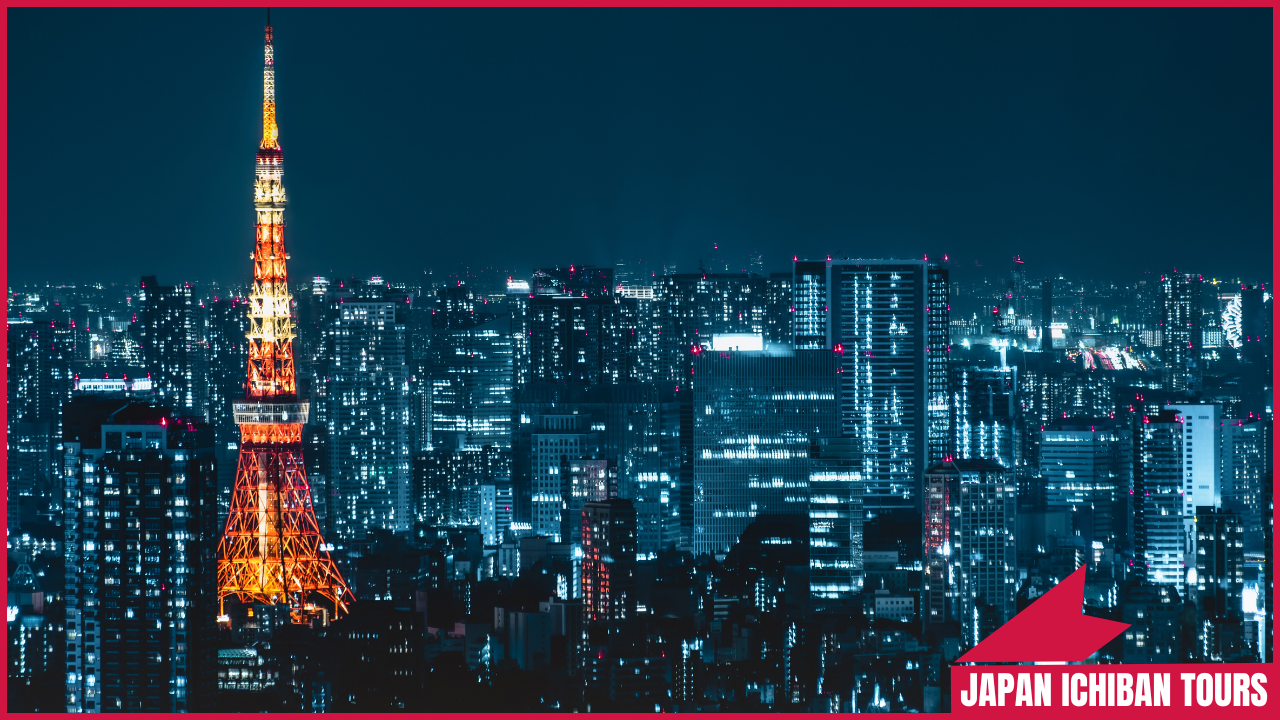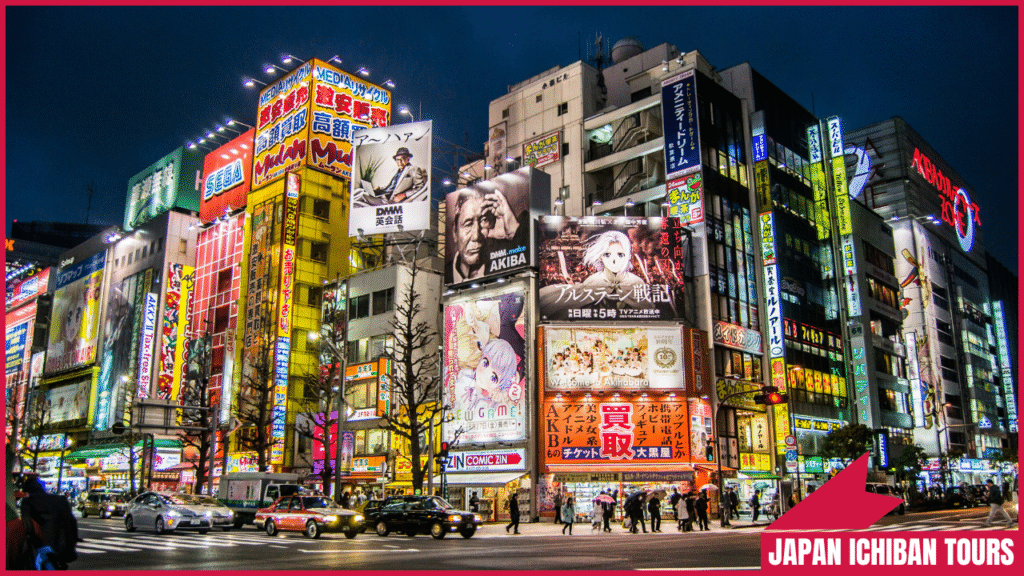
Tokyo, Japan’s electrifying capital, is a dazzling blend of futuristic innovation, ancient traditions, and vibrant urban energy. In 2025, Tokyo continues to captivate with its neon-lit streets, serene temples, and world-class culinary scene.
This guide highlights the must-do experiences in Tokyo, from iconic landmarks to hidden gems, ensuring an unforgettable adventure for first-time visitors and seasoned travelers alike.
With insider tips and practical advice, dive into Tokyo’s dynamic heart. Must-See Places in Kyoto for Travelers in 2025
Tokyo’s allure lies in its seamless fusion of old and new, with over 2.3 million foreign visitors annually and a low crime rate (80% below global average). In 2025, expect enhanced English signage, new cultural events, and seasonal highlights like cherry blossoms (March–April) and autumn foliage (October–November). From Shibuya’s bustling energy to Yanaka’s retro charm, Tokyo offers endless experiences, all accessible via its efficient transit system.
Location: Shibuya
Cost: Free
Why Do It: Shibuya Crossing is Tokyo’s iconic urban spectacle, where hundreds of pedestrians cross simultaneously under neon lights. Often compared to Times Square, it’s a thrilling immersion into Tokyo’s pulse. Watch from above at Shibuya Sky (~$18) or the Starbucks vantage point (free, buy a coffee ~$5).
Pro Tip: Avoid peak hours (8–9 AM, 5–6 PM) if you prefer a calmer crossing.
Location: Asakusa
Cost: Free (main hall), ~$1–$5 for sub-temples
Why Do It: Senso-ji, Tokyo’s oldest Buddhist temple (founded 645 AD), is a cultural cornerstone. Enter through the Kaminarimon (Thunder Gate) and stroll Nakamise-dori, a 250-meter street with stalls selling crafts and snacks (~$2–$10). The temple’s red pagoda and incense-filled courtyard offer spiritual serenity.
Cultural Note: Wash hands at the purification fountain before entering the main hall for respect.
Location: Tsukiji
Cost: Free (food ~$2–$15)
Why Do It: While the wholesale fish market moved to Toyosu, Tsukiji’s Outer Market remains a culinary hotspot with over 60 stalls and restaurants. Savor fresh sushi (~$10–$20), tamagoyaki (egg omelet, ~$3), and wagyu skewers (~$5). It’s a vibrant, affordable way to taste Tokyo’s food culture.
Pro Tip: Bring cash, as some smaller stalls don’t accept cards.
Location: Yanaka (Nippori area)
Cost: Free (shops/food ~$2–$10)
Why Do It: Yanaka offers a nostalgic escape with its retro alleys, small temples, and artisanal shops. Known as “Old Tokyo,” it’s less crowded than Shibuya, with Yanaka Ginza’s street food (e.g., croquettes, ~$2) and historic Yanaka Cemetery. Perfect for a relaxed cultural dive.
Hack: Rent a bike (~$10/day) to explore Yanaka’s narrow streets.

Location: Harajuku
Cost: Free (treasure museum ~$5)
Why Do It: Meiji Jingu, a Shinto shrine dedicated to Emperor Meiji, is an oasis of calm amidst Tokyo’s bustle. Set in a 170-acre forest, its grand torii gates and sacred grounds offer spiritual tranquility. Visit during festivals like Hatsumode (New Year’s, free) for cultural immersion.
Cultural Note: Bow twice, clap twice, and bow again when praying at the shrine.
| Experience | Location | Cost | Highlight | Best Time to Visit |
|---|---|---|---|---|
| Shibuya Crossing | Shibuya | Free | Neon-lit chaos | Dusk (5–7 PM) |
| Senso-ji Temple | Asakusa | Free | Historic temple | Early morning (7–8 AM) |
| Tsukiji Market | Tsukiji | $2–$15 | Fresh sushi | Mid-morning (9–11 AM) |
| Yanaka | Nippori | Free | Retro alleys | Weekday mornings |
| Meiji Jingu | Harajuku | Free | Forest shrine | Early morning (7–8 AM) |
Tokyo’s 2025 festivals are vibrant cultural highlights. The Sumida River Fireworks (July, free) light up the sky, while the Sanja Matsuri (May) at Senso-ji features lively parades (free, food ~$10–$20).
Experience Japan’s Zen heritage with a tea ceremony (~$20–$40) at venues like Shizu-kokoro in Asakusa. Learn to whisk matcha and savor wagashi sweets.
Dive into Tokyo’s otaku scene in Akihabara, with anime shops, maid cafes (~$10–$20), and retro arcades. Visit Yodobashi Camera for gadgets (~$10–$100).
Tokyo’s transit system is world-class. Use a Suica/Pasmo IC card (~$20, includes $15 stored value) for trains, subways, and buses. The JR Yamanote Line (~$2/ride) connects major areas like Shibuya and Harajuku.
Purchase an eSIM (Airalo, Ubigi, ~$10–$20 for 1–2 GB daily data) for navigation and translation. Download Google Translate and Maps.me for offline use.
Popular spots like Shibuya Crossing and Senso-ji get busy. Visit early (7–9 AM) or late (4–6 PM) for quieter experiences. Yanaka and northern Tokyo offer crowd-free alternatives.
Tokyo’s transit can be overwhelming. Use bilingual station maps and Google Maps for transfers. Koban (police boxes) at major stations like Shibuya offer friendly help.
English signage is improving, but learn phrases like “Konnichiwa” (hello) or “Sumimasen” (excuse me). Google Translate’s camera feature helps with signs and menus.

Japan’s lost-and-found system is exceptional. Report lost items at stations or koban (free, ~$5–$10 for mailed items).
Tokyo in 2025 offers a thrilling mix of urban energy, cultural depth, and culinary delights. From crossing Shibuya’s iconic intersection to wandering Yanaka’s retro alleys, these must-do experiences capture the city’s essence. Enhance your visit with festivals, tea ceremonies, or Akihabara’s pop culture. With efficient transit, budget-friendly hacks, and these insider tips, your Tokyo adventure will be unforgettable.
What are Tokyo’s must-do experiences in 2025?
Shibuya Crossing, Senso-ji Temple, Tsukiji Outer Market, Yanaka, and Meiji Jingu offer a perfect blend of urban buzz and cultural heritage.
How can I avoid crowds in Tokyo?
Visit popular spots early (7–9 AM) or late (4–6 PM). Explore Yanaka or Ueno for quieter vibes.
What’s the best way to get around Tokyo?
Use a Suica/Pasmo IC card (~$20) for trains and buses, or a Tokyo Subway Ticket (~$15 for 3 days) for metro rides.
How can I experience Tokyo’s culture?
Join a tea ceremony (~$20–$40), attend Sanja Matsuri (free), or explore Akihabara’s pop culture.
When’s the best time to visit Tokyo?
Spring (March–April) for cherry blossoms and autumn (October–November) for foliage offer ideal weather and stunning scenery.

Discover Japan Like Never Before 🇯🇵








Copyright © 2025 Japan Ichiban Tours | made with ❤️ by ideavire.com
Please select a template first

2 Comments
Polish News · September 19, 2025 at 3:29 am
The text moves with deliberate calm, creating a meditative flow where each sentence contributes to reflective rhythm. Ideas unfold gradually, encouraging the reader to linger, consider nuance, and experience layered insight and clarity.
Top 15 Things to Do in Nagano, Japan (Must-See Guide) · August 29, 2025 at 6:26 pm
[…] This guide highlights the top 15 things to do in Nagano, with insider tips to enhance your experience. Must Do in Tokyo: Top Experiences You Can’t Miss in 2025 […]